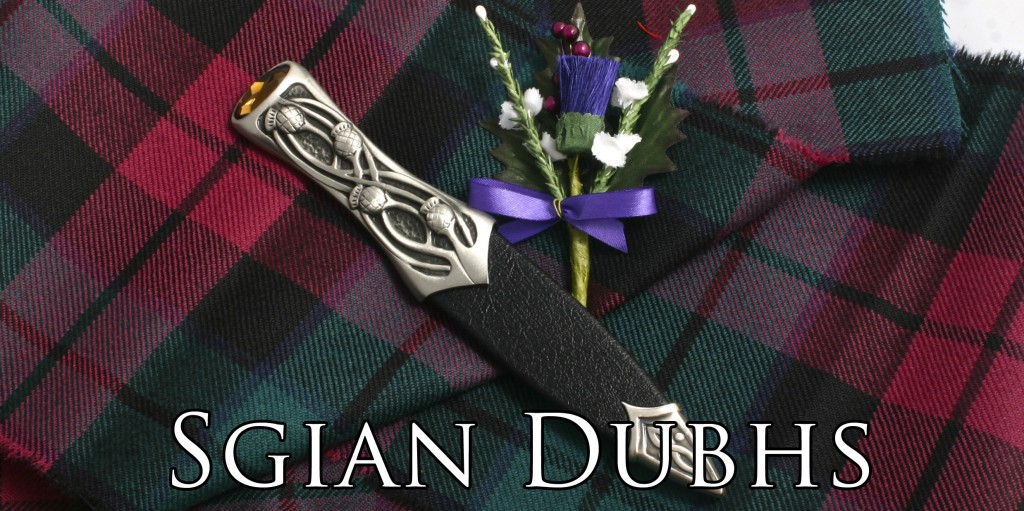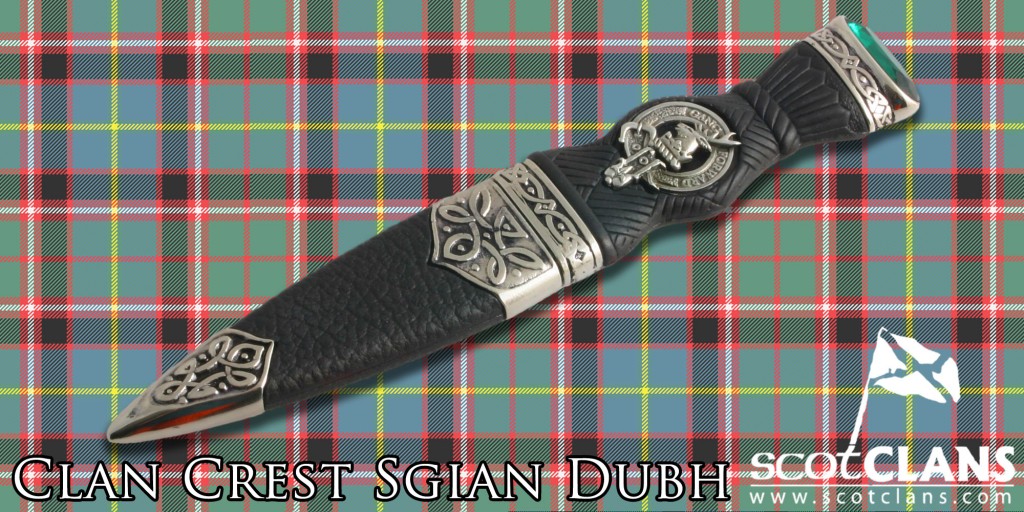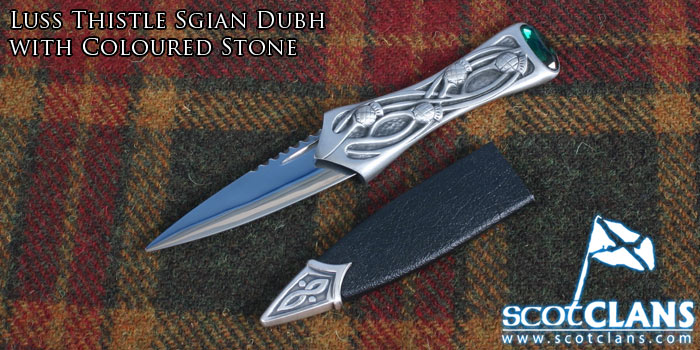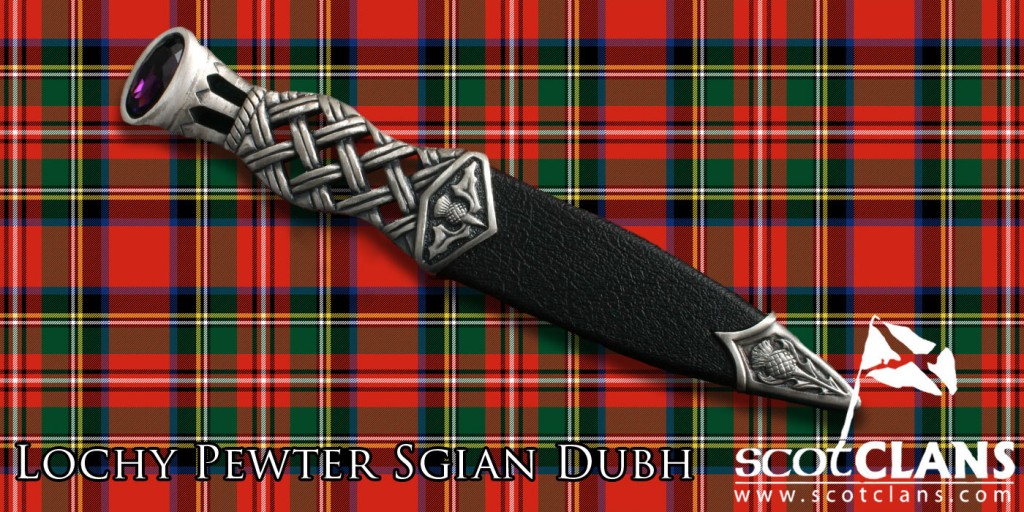
The Sgian Dubh is a small edged knife, usually 3-4 inches (~8-10cm) in length, that is worn as part of the traditional Highland dress tucked into the top of the kilt hose with only the handle visible. It’s origins are fairly unclear, although it is now a purely ornamental item, most communally applied with an underage blade, that is an essential part of the full Highland outfit.
The word sgian dubh, pronounced ‘skee-an doo’, translates from Gaelic to ‘black knife’. This is usually derived as meaning a ‘hidden’ blade, with the black being used much the same way as in black market or blackmail. This is further given credence when compared to other Gaelic words, such as dubh-fhacal translated as ‘riddle’ or ‘hidden word’, or dubh-cheist translated as ‘enigma’ or ‘hidden question’.

One theory behind the origins of the sgian dubh is that the knife evolved form another blade carried by the Highlanders, the sgian achlais. Slightly larger than the sgian dubh and likely a close relative of the dirk, the sgian achlais was carried on the upper sleeve or concealed within the jacket. During this time etiquette demanded that a guest would reveal any weapons upon entering their hosts home. As such the knife would instead be placed on display, but still within reach, usually within the top of the hose.
The sgian dubh also has a lot in common with a more practical utility blade, used for cutting fruit. food or for skinning. When the Highland Dress Proscription Act came into effect after the Battle of Culloden, it was made illegal for Highlanders to bear arms of any kind. The relatively small size of the sgian dubh was deemed acceptable and it therefore became a popular utility knife for everyday use.

The early blades varied in construction, some having a “clipped”, such as found on the Bowie knife or “drop” point. The “spear-point” tip has now become universal. The earliest known blades, some housed in the National Museum of Scotland in Edinburgh, are made from German or Scandinavian steel, which was highly prized by the Highlanders. Scalloped filework on the back of the blade is common on all Scottish knives. Most early sgian dubhs are shown to have used stag horn for the construction of the handle, as it was a readily available and hardwearing.
Since the modern sgian dubh is only used in a ceremonial capacity the blades tend to be of a simple construction with a blunted edge and are typically made from stainless steel. The hilts on modern sgian dubhs are made form a variety of materials. The lower quality versions usually utilise a molded resin or plastic, which lowers the price but also the quality. The mid range again dubhs tend to utilise more traditional materials such as real stag horn(generally collected as it is is naturally shed, so no harm is caused to the animals at all), which is renowned for it’s hardiness, or carved wood. On the higher end of the scale full metal handles are used, generally featuring some kind of coloured stone, such as a cairngorm.

Here at ScotClans we sell a fine range of Scottish made sgian dubhs in various styles and finishes and we are sure we will have the right one for you. Something to keep in mind, as with a kilt, is a good sgian dubh will last more than a lifetime and can make a fantastic heirloom to pass down to your children. One of my prized possessions is my fathers sgian dubh.
Come take a look at our full range of sgian dubhs HERE
